7 Powerful Ways to Build Emotional Intelligence in Teenagers
Introduction
In today’s fast-paced world, where competition often outweighs compassion, one skill is quietly emerging as a superpower among teenagers: emotional intelligence. The ability to understand, manage, and express emotions can shape how teens connect with others, make decisions, and handle challenges. At Kaahe, we believe that emotional intelligence is not just a soft skill—it’s a life skill every student deserves to learn early.
Why Emotional Intelligence Matters for Teens
Teenagers face an emotional rollercoaster: peer pressure, academic stress, social media comparison, and identity questions. EQ (Emotional Quotient) helps them build stronger relationships, reduce anxiety, make better decisions, and grow into empathetic adults. And unlike IQ, emotional intelligence can be learned and improved over time. When teens learn how to handle their emotions effectively, it enhances not only their academic performance but also their relationships and self-worth.
Numerous studies have shown that students with higher EQ levels are more likely to succeed in life. They handle rejection better, cooperate more easily with peers, and are more resilient during failure. EQ isn’t just about being “nice”; it’s about navigating complex emotions with clarity, compassion, and control.
Meet Nisha: A Real Classroom Story
Nisha, a class 10 student from Haldwani, used to get upset easily in group projects. If someone disagreed with her idea, she would either withdraw or react sharply. During a Kaahe workshop on self-awareness and communication, Nisha learned how to pause, notice her triggers, and express her emotions more calmly.
One day, instead of snapping back at a teammate, she took a deep breath and said, “I feel unheard right now. Can I share my point after you finish?” That moment shifted the tone of the entire group project. Over time, Nisha not only managed her frustration better but also started supporting others when they struggled. Her teachers saw a noticeable shift in her attitude, and she even volunteered to help mediate conflicts between peers. Emotional intelligence transformed her from a reactive participant to a mindful leader.
1. Practice Self-Awareness Daily
Self-awareness is the foundation of emotional intelligence. Teens who understand their emotional patterns are better equipped to manage them. Encourage teenagers to pause and ask: “What am I feeling right now? What triggered this? How is it affecting my actions?” These questions shift their focus inward and build emotional insight.
One practical way to build self-awareness is through journaling. Even a simple prompt like “What made me smile today?” or “What frustrated me the most?” can open emotional awareness. Schools can implement quick daily check-ins using emoji charts or color-coded feelings boards. Over time, this practice becomes second nature, and students begin identifying their emotions in real-time, improving their self-control and empathy.
At Kaahe, we often start sessions with a one-minute body scan or a “feelings flashcard” to help teens connect with what they’re experiencing internally. When teens understand their emotional patterns, they’re more likely to manage mood swings, peer pressure, and academic stress in healthy ways.
2. Teach the Power of Pause
Impulsivity is common during adolescence. Teens often act or speak before thinking, especially when emotions run high. Teaching the pause is a game-changer. Even a 3-second delay before responding can prevent hurtful comments, physical fights, or emotional shutdowns.
At Kaahe workshops, we introduce the “Pause Button” activity. Students imagine they have a pause button they can mentally press whenever they feel anger or stress bubbling up. It’s followed by breathing deeply, counting to five, or simply grounding themselves by noticing their surroundings. These quick strategies create a moment of space between emotion and reaction.
Parents and teachers can support this by modeling it too. When you’re upset, say aloud, “I’m going to pause and take a breath before I respond.” This not only regulates your response but teaches teens that pausing isn’t weakness—it’s wisdom in action.
3. Help Identify and Name Emotions
Imagine trying to solve a puzzle without knowing what pieces you have. That’s what managing emotions feels like without an emotional vocabulary. Most teenagers know basic emotions like happy, sad, or angry, but emotional intelligence requires nuance—recognizing the difference between disappointment, guilt, shame, or irritation.
Use tools like the “Feelings Wheel” or emotion cards to help students expand their vocabulary. Encourage conversations that go deeper than “I’m fine” or “I’m okay.” Schools can build a culture of emotional literacy by incorporating feelings charts into classrooms, especially in morning meetings or reflective exercises.
Teachers can assign reflective prompts like “What emotion dominated your week and why?” or “Describe a moment you felt misunderstood.” These allow teens to practice identifying complex emotions and connect words to experiences, which is essential for managing emotions effectively.
4. Encourage Perspective-Taking
Empathy begins when we try to understand what someone else is experiencing. Teenagers, caught in their own whirlwind of changes, often struggle to see beyond their own lens. But with guidance, they can learn to put themselves in others’ shoes.
Use real-life scenarios, group role-plays, or stories to ask: “How do you think the other person felt?” or “What could have made them act that way?” Reflective exercises like writing a diary entry from another person’s point of view build this skill beautifully.
At Kaahe, we use theatre techniques like “Character Flip” where students act out opposing roles and switch midway. This not only builds empathy but teaches them how every conflict has multiple truths. Perspective-taking doesn’t just help them with peers; it also makes them more understanding toward parents, teachers, and others they interact with.
5. Create Safe Spaces to Express
Teens need outlets where they can express feelings without fear of judgment. A safe space is not just physical—it’s emotional. It can be a corner in the classroom, a small group circle, or even an online journaling platform. What matters is how safe the teen feels to be vulnerable.
Open expression through storytelling, art, music, or theatre is therapeutic and validating. Encourage students to write poems, perform skits, or simply talk about a moment they felt proud or disappointed. Schools can designate “Feelings Corners” or hold weekly “Emotions Circles” where students reflect openly.
Kaahe uses creative methods like “Emotion Sculpting” (where students express an emotion using body movement) or “My Emotion Playlist” (where students make a playlist of songs that match their moods). These fun, low-pressure activities make emotional expression accessible even to introverts.
6. Teach Assertive Communication
Communication is at the heart of emotional intelligence. Teens often communicate in two extremes: passively saying nothing, or aggressively saying too much. Assertive communication lies in the middle—it is respectful, clear, and confident.
Teach teens to use “I statements” to express how they feel and what they need. For example: “I feel frustrated when I don’t get time to speak in group discussions because I want to share my ideas.” This reduces blame and fosters understanding.
Role-play exercises where students practice assertive responses to difficult situations—like peer pressure, disagreements, or feedback—can help them internalize the language. At Kaahe, we use group games like “Say It Calm” where teens practice phrasing difficult messages in kind, confident tones. This not only improves EQ but prepares them for interviews, leadership roles, and life beyond school.
7. Model and Reward Emotional Growth
Teens are observant. They notice more about adult behavior than we think. When adults around them model emotional intelligence—apologizing when wrong, staying calm under stress, or celebrating someone else’s success—teens begin to mimic the same.
Schools and parents should intentionally recognize emotional wins. Compliment a teen who deescalates conflict. Celebrate when someone opens up in front of peers. Small acknowledgments like, “I noticed how you stayed calm even when the discussion got heated. That’s real maturity,” go a long way.
At Kaahe, we offer Emotional Intelligence Badges and Reflection Journals that track each student’s growth journey. These tools help make EQ development visible and motivating. Students feel proud of growing emotionally just like they do academically or athletically.
Bonus: Try Emotional Intelligence Through Art
Art can be a powerful vehicle for emotional exploration. Ask students to draw their emotions as weather or create collages that represent how they feel inside. Activities like “paint your week” or “create an emotion monster” help make emotional reflection fun and creative. Artistic self-expression allows even reserved students to express deep emotions safely.
How Schools Can Integrate Emotional Learning
EQ development shouldn’t be a one-time event. Schools can integrate short SEL (Social Emotional Learning) activities during assemblies, group work, or club time. Collaborating with platforms like Kaahe ensures structured and age-appropriate modules delivered by trained facilitators. Involving school counselors, language teachers, and arts educators in emotional development efforts creates consistency across subjects.
Suggestions for schools include:
- Weekly EQ assemblies with real stories or activities
- Monthly parent workshops on emotional parenting
- Peer mentoring programs where older students guide younger ones in handling emotions
When emotional intelligence becomes part of the school culture, it prepares students not just to pass exams, but to thrive in life.
For Parents: Support Begins at Home
Emotional intelligence grows fastest when parents model it daily. Encourage your teen to talk about how they feel after school. Avoid rushing to solve everything—instead, ask, “Do you want advice, or do you want me to just listen?” Celebrate when your teen shares vulnerabilities, even if it’s something small. Your listening presence does more than any lecture ever could.
Make time for calm conversations during dinner or bedtime. Share your own emotional stories too. When teens see that even adults are still learning and managing emotions, they feel safer in their journey.
Conclusion
Building emotional intelligence in teenagers is an investment in their lifelong wellbeing. It’s not about suppressing emotions but learning how to navigate them wisely. Just like Nisha, many students are waiting for that one spark—a session, a mentor, a tool—that helps them turn inwards and grow. With conscious effort, the right tools, and a nurturing environment, every teen can become emotionally strong. Kaahe is proud to be part of that journey.
🌱 Ready to nurture emotional intelligence at your school?
Connect with Kaahe to explore interactive, story-based workshops for students and teachers.

